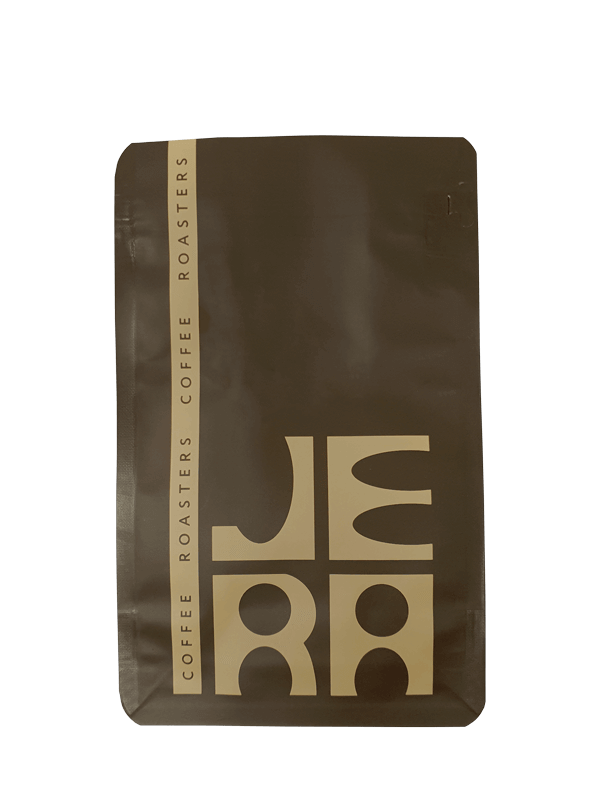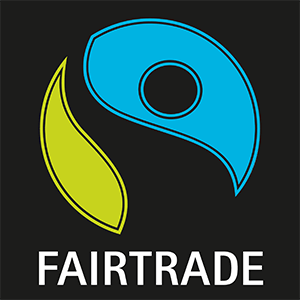קפה אתיופי | Yirgacheffe, Gedeo zine, village of Banko Chelchele
קפה אתיופי בעיבוד יבש
מאוד נקי, קליל ועגול. מרירות נמוכה, מתיקות גבוהה, חמיצות נעימה הדרית עם טעמים של אפרסק, תות, תה לבן וארומה פרחונית. מצוין להכנת כל סוגי קפה פילטר
₪55.00 – ₪220.00
ברכישת כל סוגי קפה קלוי בסכום:
בין 600 ש"ח ל-1000 ש"ח עם קוד קופון "15%" תקבלו 15% הנחה
בין 1001 ש"ח ל-1500 ש"ח עם קוד קופון "25%" תקבלו 25% הנחה
מעל 1501 ש"ח עם קוד קופון "30%" תקבלו 30% הנחה
הקפה הזה מגיע מהכפר בנקו צ'לצ'לה, הממוקם במחוז גדב (Gedeb) שבאזור גדיו (Gedeo), אשר שייך למחוז האומות, הלאומים והעמים הדרומיים באתיופיה. האזור ידוע באקלים האידיאלי שלו ובגובה הרב שמספקים תנאים מצוינים לגידול קפה. האצווה הספציפית הזו גודלה בגבהים שבין 1,900 ל-2,300 מטר מעל פני הים.
בצ'לצ'לה, גידול קפה הוא לא רק מקצוע — אלא דרך חיים שמושרשת עמוק במסורת הקהילתית. הידע והניסיון בגידול וקטיף קפה מועברים מדור לדור, והקשר התרבותי העמוק לקפה עיצב את אורח החיים והפרנסה של התושבים, והוא מהווה חלק בלתי נפרד מזהותם. עונת הקטיף נמשכת בדרך כלל בין אוקטובר לדצמבר.
המגדלים קוטפים את הדובדבנים הבשלים באופן ידני, תוך הקפדה על בחירת הפירות האיכותיים ביותר. לאחר מכן, הקפה עובר תהליך עיבוד טבעי — כלומר, הדובדבנים מתייבשים בשלמותם בשמש. תהליך הייבוש הזה נמשך בין שבועיים לארבעה שבועות, כאשר הדובדבנים נהפכים באופן תדיר כדי להבטיח ייבוש אחיד.
לאחר שהדובדבנים הגיעו לרמת הלחות הרצויה, הם מאוחסנים במקום קריר למספר שבועות. שלב ההשבחה הזה עוזר לפתח את טעמי הפולים.
לאחר תקופת ההשבחה, הקליפה החיצונית והציפה היבשה מוסרות בתהליך קילוף (hulling), ולאחר מכן מוסרת גם שכבת הפרצ׳מנט בתהליך דִיוּק (milling), ובכך מתגלים פולי הקפה הירוקים.
קפה מאתיופיה
אתיופיה נחשבת לעיתים קרובות כמקום הולדתם של הקפה המשובח ביותר בעולם. כאדמת המוצא של קפה ערביקה, המדינה מתהדרת במגוון ביולוגי שאין לו תחרות. העושר הטבעי הזה, בשילוב מסורת קפה עמוקה וטרוארים מגוונים הפרוסים ברחבי המדינה, יצרו פסיפס יוצא דופן של זני ערביקה.
בעוד ששיטת העיבוד הנפוצה ביותר באתיופיה היא עיבוד טבעי (יבש), כ-30% מהמגדלים משתמשים גם בשיטה הרטובה (שטופה). אזורים מוכרים כמו יירגצ'פה, סידאמו ולימו נחשבים לאזורי גידול הקפה הידועים והנחשבים ביותר במדינה.
אתיופיה היא מדינה ייחודית בכל הקשור לקפה. אלפי זנים פראיים של קפה גדלים כאן, ורבים מהם עדיין לא סווגו. באתיופיה התגלו לראשונה זנים ידועים כמו גיישה, רומה סודן וווש ווש.
אזורים שונים באתיופיה מייצרים קפה בטעמים ובמאפיינים שונים. לדוגמה, קפה מאזור יירגצ'פה עשוי להתאפיין בארומה פרחונית עזה עם ניחוחות של תה והדרים. קפה שטוף מאתיופיה המערבית נוטה להיות עשיר יותר, פרחוני ובעל גוף מלא. קפה בעיבוד טבעי מאזור הרר יהיה עמוק, שוקולדי ועמוס בטעמי פירות בשלים.
עיבוד טבעי (יבש) – שיטת עיבוד קפה מסורתית
ייבוש קפה בתוך הדובדבן הוא שיטת העיבוד העתיקה ביותר לפולי קפה. היא הייתה בשימוש עוד מההתחלה של ייצור הקפה.
אז, הקפה יוצר באתיופיה ובתימן, שם האקלים היבש והעדר עונות גשומות ממושכות אפשרו לדובדבני הקפה להתייבש היטב באוויר הפתוח. כך עיבדו את כל הקפה, עד שהוא התפשט למושבות של מדינות אירופה.
בעיבוד טבעי, החקלאים מייבשים את דובדבני הקפה השלמים על פאטיו (משטחים מבטון) או על מיטות אפריקאיות מוגבהות – שולחנות ייבוש מיוחדים עם רשת. תהליך הייבוש נמשך בדרך כלל עד ארבעה שבועות. יש חוות שבהן משתמשים גם במייבשים מכניים, שאליהם מכניסים את הדובדבנים לאחר כמה ימים של ייבוש בשמש.
הדובדבן מתייבש יחד עם הפול, והסוכרים מהמוץ ומהשכבה הרירית (mucilage) נספגים בתוך הפול. לכן, באותו טרואר, אותה דרגת קלייה ואותו אופן הכנה – עיבוד טבעי יעניק לקפה גוף מלא יותר ומתיקות גבוהה יותר.
בשלב מסוים איבדה השיטה הזו את הפופולריות שלה. היא אפילו קושרה לקפה באיכות ירודה, כי פולים זולים יותר היו בדרך כלל מעובדים כך. חוסר תשומת לב לשלב העיבוד גרם לעוד יותר פגמים בקפה.
כיום, העיבוד הטבעי חזר להיות בשימוש נרחב. תעשיית הקפה המיוחדת (ספשלטי) שמה דגש על טעם, וכאשר העיבוד מתבצע נכון – אפשר להגיע לטעמים חיים ובהירים ולציונים גבוהים מאוד בקאפים.
בתום העיבוד הטבעי, דובדבני הקפה המיובשים נשמרים בסילואים (מיכלי אחסון) למשך תקופה, כדי לייצב את הטעמים והפעילות המים. לפני ייצוא, הדובדבנים היבשים עוברים תהליך hulling – בו מסירים את הקליפה ומוציאים את הפולים הירוקים, ואז אורזים אותם לשקיות ייצוא.
לכן, קפה שעובד בשיטה טבעית מתאפיין בגוף מלא יותר, חמיצות נמוכה יותר וטעמים מתוקים ובהירים.
פייר טרייד (Fair Trade)
מטרת הסמכה זו היא לתמוך בתנאי עבודה ושכר הוגנים בחוות במדינות מתפתחות. באופן מסוים, היא מקדמת סחר הוגן, ולא מתייחסת רק לקפה אלא גם למוצרים נוספים. ההסמכה פופולרית במיוחד בקרב צרכנים במדינות מפותחות שבהן קיימת מודעות גבוהה יותר לצריכה מוסרית – בעיקר בארצות הברית ובצפון אירופה.
הסמכת Fair Trade מבטיחה שלא נעשה שימוש בעבודת ילדים בחוות, שעובדים מקבלים שכר הוגן, ושמתקיימים תקני בריאות ובטיחות בעבודה. הארגון מבצע בדיקות שוטפות בחוות המאושרות כדי לוודא שהן עומדות בדרישות.
Ethiopia Banko Chelchele
This coffee originates from the village of Banko Chelchele, located in the Gedeb district (woreda) of the Gedeo zone in Ethiopia's Southern Nations, Nationalities, and Peoples region. The area is celebrated for its optimal climate conditions and high elevations. This particular lot was grown at altitudes ranging from 1,900 to 2,300 meters above sea level.
In Chelchele, cultivating coffee is more than just a livelihood — it’s a deeply rooted cultural tradition. Generations of farmers have passed down their knowledge and skills, making coffee farming an essential part of the community’s identity and everyday life. This long-standing connection has helped shape both the customs and the economy of the area.
The harvest season typically spans from October through December.
Farmers in the region handpick only the ripest cherries to ensure top quality. The cherries are then naturally processed — meaning they are left to dry whole in the sun. This sun-drying process lasts between two and four weeks, during which the cherries are regularly turned to promote even drying.
Once the cherries reach the desired moisture content, they are stored in a cool environment for several weeks. This resting phase allows the flavours within the beans to mature and develop.
Following this rest, the dried cherries go through hulling to remove their tough outer skin and dried pulp. The next step is milling, which removes the parchment layer and reveals the green coffee beans ready for export or further roasting.
Coffee from Ethiopia
Ethiopia is often regarded as the origin of the finest coffees in the world. As the homeland of Arabica coffee, the country boasts unmatched biodiversity. This natural richness, combined with a deep-rooted coffee heritage and diverse terroirs across the country, has given rise to an extraordinary mosaic of Arabica varieties.
While the most common processing method in Ethiopia is natural (dry), about 30% of producers use the washed method as well. Renowned regions like Yirgacheffe, Sidamo, and Limu are among the most famous and celebrated coffee-growing areas in the country.
Ethiopia is a unique country when it comes to coffee.
Thousands of wild coffee varieties grow here, many of which have yet to be classified. It is in Ethiopia that such famous varieties as Gesha, Rume Sudan, and Wush Wush were discovered.
Different regions of Ethiopia produce very different coffees. For example, coffee from the Yirgacheffe region can have an intense floral aroma with notes of tea and citrus. Washed coffees from Western Ethiopia tend to be richer, more floral, with a fuller body. And naturally processed coffees from the Harrar region are deep, chocolatey, and full of ripe fruit flavors.
Natural (Dry) Processing
Drying coffee in the cherry is the oldest method of processing coffee beans. It has been used since the very beginning of coffee production.
At that time, coffee was produced in Ethiopia and Yemen, where the dry climate and the absence of extended rainy seasons allowed coffee cherries to dry well in the open air. This method was used for all coffee until it spread to European colonies.
In natural processing, farmers dry whole coffee cherries either on patios (concrete surfaces) or on raised African beds — special mesh drying tables. The drying process usually takes up to four weeks. Some farms also use mechanical dryers, loading the cherries into them after a few days of sun-drying.
The cherry dries together with the bean, and sugars from the pulp and mucilage are absorbed into the bean. That’s why, under the same terroir, roast level, and brewing method, natural processing tends to result in coffee with a fuller body and higher sweetness.
At one point, the natural method lost its popularity. It even became associated with lower-quality coffee, as cheaper beans were more often processed this way. A lack of attention to the processing stage led to even more defects.
Today, the natural method is widely used again. The specialty coffee industry focuses on flavor, and when done properly, natural processing can produce a very vibrant taste and score high in cupping evaluations.
As a result of natural processing, dried cherries are produced and then stored in silos for a period to stabilize flavor and water activity. Before export, the dried cherries go through a hulling process, where the husk is removed and the green beans are extracted and packed into export bags.
So, natural processed coffee is characterized by a more full body, less acidity and bright, sweet flavour.
Fair Trade
The goal of this certification is to support fair working conditions and wages on farms in developing countries. In a way, it advocates for fair trade and applies not only to coffee but also to other products. It is especially popular among consumers in developed countries with more conscious consumption habits — mainly in the U.S. and Northern Europe.
Fair Trade certification means that no child labor is used on the plantation, and workers receive fair wages while health and safety standards are maintained. The organization regularly inspects the conditions on certified farms to ensure compliance.










